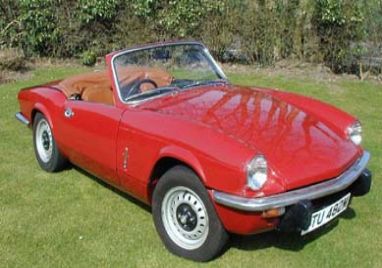
Posted on 03/06/2011 7:12:13 PM PST by sukhoi-30mki
The Spitfire - - an appreciation
By George Kerevan
75 years ago today, as darkness loomed across Europe, an achingly beautiful aircraft soared into the heavens on its maiden flight. The plane would become both an eight-gunned instrument of freedom and a near-spiritual symbol of it. The Spitfire was born.
AT 4:35pm on the afternoon of 5 March, 1936, a pilot called Joseph 'Mutt' Summers walked across the grass of Southampton Airport - currently a hub for Flybe. Summers had spent a tiring day testing a new RAF bomber. Now, he had to squeeze in the first flight of a new fighter called the "Spitfire". A plane that would become a legend and - arguably - hold the pass in 1940 long enough to save us from fascism.
But in 1936, the conventional wisdom in Britain was that "the bomber would always get through". Many considered new fighter planes like the Spitfire a waste of money.
Mutt Summers pressed the starter button and the Spitfire took to the air for the first time. Unlike the wood and canvass biplanes then serving as the RAF's frontline fighters, the Spit was a monoplane of all-metal construction. It had a retractable undercarriage and a fantastic speed of over 350mph. In combat it would be armed with eight machine guns. At last, here was something that would stop any bomber.
The Spitfire was the inspired creation of a true engineering genius, Reginald Joseph Mitchell. He was born in 1895, the son of two Stoke-on-Trent primary school teachers. His poor background precluded university, so he began an
(Excerpt) Read more at living.scotsman.com ...
Another tactic, when a 262 was on your tail, was to drop the throttle, hit the air brakes and fall off sharply to the left or right.
Then hit the power, go nose up...and you'd find the 262 screaming past you...and straight into your sights.
I was being sarcastic about the claim of a 550 mph top speed of later Spitfires. :)
I’ve flown a lot of the wwII fighters in online battle arenas. Those 262’s are a pain until you get up to speed. And even then, about the ONLY thing they have going for them is speed. But that can be a lot.
“The record for the fastest single-engined piston plane is held by a modified Grumman F8F Bearcat, the Rare Bear, with a speed of 850.24 km/h (528.31 mph) on 21 August 1989 at Las Vegas, Nevada, United States of America.”[8][9]
I’ve seen Rare Bear fly at Reno. You don’t so much hear it as you do feel it.
Works for me! ........................ FRegards
LOL...I was actually giving him the benefit of the doubt of a typo over speaking out of his butt...
About ten years ago I was working in my driveway on a lovely Saturday morning. Just then I heard the faint but increasing sound of something strangely familiar. A moment later a P-51D flew right over my house at about 1000 feet. It took me two hours to calm down. A great way to start the day!
A few years later the Mustang showed up and settled the argument.
Posting HTML
The Mustang was not a good fighter until they put the Merlin engine in it.
I had a similar experience with a P-47. It must have been unforgettable to hear a formation of those flying overhead.
Still a beautifull plane after all these years.
bttt
Look at the poor Typhoon! It has its slats and flaps out to keep from falling out out the sky!
I got to see a Spitfire fly at Duxford. What a lovely noise..
What a coincidence, my dad was an RAF cadet who trained at Falcon Field in Mesa. The Chinese cadets would have been across town at Thunderbird Field in Glendale.
My dad’s service was fairly late in the war and though he wanted more than anything to be a front line fighter pilot, they had him stuck on an operational training squadron. He had a few fruitless shows in the Hurricane, Spitfire, and Mustang III, including a couple of unopposed bomber escorts to France and Belgium, but mostly spent his days instructing, flying radio relays, target drones, mail runs, and other such drudgery.
But he was a skilled bridge player, and was therefore recruited by an RAF Group Captain several ranks up his chain of command to be his partner. My dad helped him win for several months until the senior guy was reassigned elsewhere, and as a favor he got my dad posted to 19 Squadron late in 1944.
This late in the war the Allies had widespread air supremacy, and 19 Sqn. were getting as much fighting as anyone else in the European Theater, escorting Beaufighters to Norway in the Mustang IV (i.e. P-51D). They saw plenty of air to air and air to ground action, and even got in a big dogfight with the entire Ace of Spades squadron of the Luftwaffe. He saw two of his best friends shot down the day before VE day, can you imagine?
Nothing sounds like a Spitfire. A noise of beauty.
In honor of Pulaski Day, the classic scene in The Battle of Britain, featuring the 303rd Kosciuszko Squadron. The Poles mostly flew Hurricanes, not Spitfires, though.
http://www.youtube.com/watch?v=m1pplBZu0oU

It sure did when they used them in hydroplanes of the 50s & 60s. Especially when they hit the nitrous oxide on the back stretch !
Disclaimer: Opinions posted on Free Republic are those of the individual posters and do not necessarily represent the opinion of Free Republic or its management. All materials posted herein are protected by copyright law and the exemption for fair use of copyrighted works.